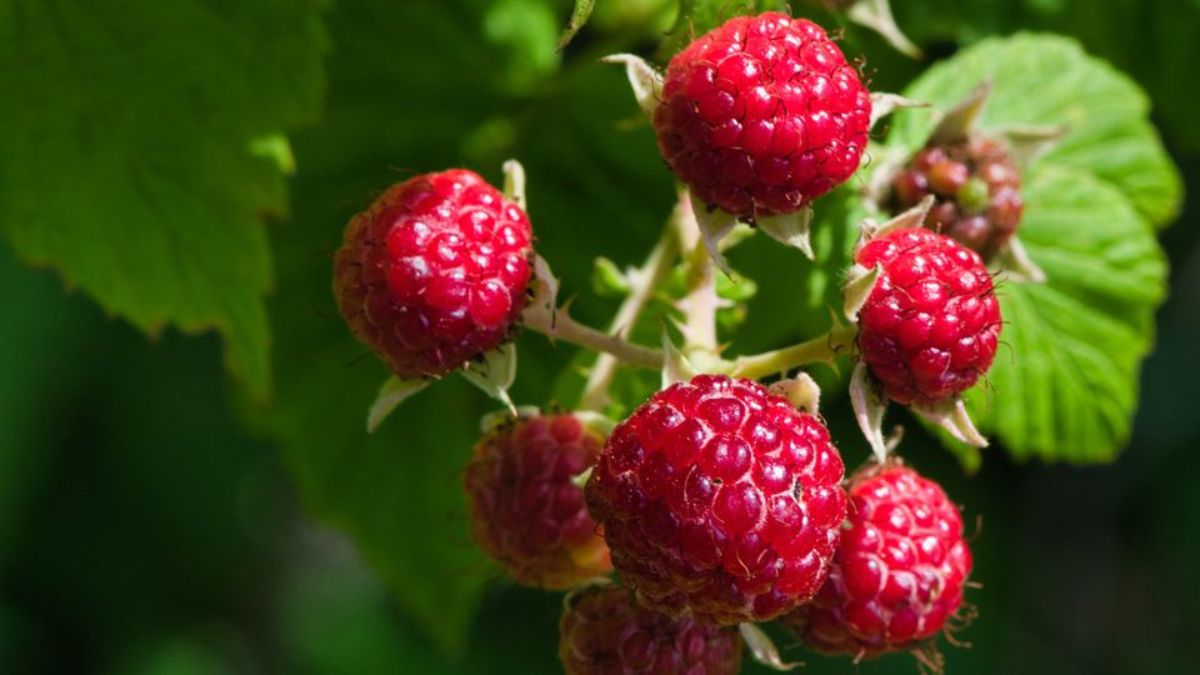Scientists fabricate fake raspberries so that robots can practice picking this delicate fruit
June 26, 2023 By Prelo Con

(Image Credit Google)
(Image credit- Technology Networks)
Researchers in Switzerland have created artificial raspberries made of silicon that may be used to teach robots how to pick and manage this delicate fruit.
Since raspberries are fragile and easily bruised, picking them can be challenging. As a result, they are typically gathered by hand.
Robots Picking Fruit Using Fake Raspberries
Engineers are teaching robots to select raspberries on a silicone replica at the Computational Robot Design & Fabrication (CREATE) lab of the Ecole Polytechnique Federale de Lausanne (EPFL).
According to the reports, engineers created artificial raspberries that look like genuine things. By using this innovation, testing food waste will be reduced and difficult harvesting seasons would be avoided.
[caption id="" align="aligncenter" width="1200"]

Image credit- New Atlas[/caption]
Josie Hughes, a professor at CREATE, expressed her enthusiasm for this creation. It's an intriguing challenge for us as robotics engineers, Hughes said in a statement. Waste is not an option because the raspberry harvesting season is so brief and the fruit is so expensive.
Furthermore, it would be prohibitively expensive and logistically difficult to evaluate various choices in the real world, she continued. Because of this, we chose to conduct our experiments in a lab and create a replica of
Raspberry for teaching harvesting robots.
Their research was published in the journal Communications Engineering this week. The replica was described as a "marvel of engineering" because its flesh is constructed of silicone and its container is 3D-printed from plastic.
The CREATE engineers accomplished a significant feat when they created a fake raspberry that can "tell" the robot how much pressure to apply in order to preserve the fruit during harvest.
Kai Junge, a Ph.D. student, observed that by using a sensorized Raspberry and a machine learning algorithm, they were able to educate a robot to exert the proper amount of force.
The most difficult component, according to study participant Junge, was teaching the robot to release its hold after the raspberry separated from the container to prevent squashing of the fruit.
The disclosed statement acknowledged that this process was challenging to complete given that the robots are normally conventional.
[caption id="" align="aligncenter" width="2000"]

Image credit- AZoRobotics.com[/caption]
Tests are being conducted on the fruit-picking robot
Considering they have just been employing a basic feedback system, the engineers described the process as being exceedingly difficult. Currently, the harvesting robot comprises two 3D-printed fingers that operate as grippers and are wrapped with a thin silicone layer. These fingers are coupled to a robotic arm.
Hughes told PopSci that the next stage for the engineers is to create more intricate controllers so that robots may select raspberries on a wider scale without destroying or crushing them.
In order to enable robots to "feel" and "see" the raspberries, the developers will initially concentrate on creating a camera system. Hughes pointed out that other soft fruits will also be picked using this approach.
As well as developing technologies for other soft fruit, Hughes added, "We'd like to apply this physical-twin concept to more challenging tasks like other berries, tomatoes, apricots, or grapes."
Based on a tiny test with actual raspberries, CREATE engineers' robot successfully picked 60% of the berries without causing any damage. That's considerably less than the 90% average from human harvesters, though. So they created a fake raspberry that would aid in the
robot's development.
The CREATE engineers will put their robots to the test in the summer raspberry-picking fields to assess how well they work. If this technique performs as expected, the company apparently aims to add apricots, tomatoes, and other berries to its repertory of synthetic fruits.
Also read:
Due to Serve Robotics, small robots are preparing to deliver Uber Eats orders
By Prelo Con
Following my passion by reviewing latest tech. Just love it.


 Image credit- New Atlas[/caption]
Josie Hughes, a professor at CREATE, expressed her enthusiasm for this creation. It's an intriguing challenge for us as robotics engineers, Hughes said in a statement. Waste is not an option because the raspberry harvesting season is so brief and the fruit is so expensive.
Furthermore, it would be prohibitively expensive and logistically difficult to evaluate various choices in the real world, she continued. Because of this, we chose to conduct our experiments in a lab and create a replica of Raspberry for teaching harvesting robots.
Their research was published in the journal Communications Engineering this week. The replica was described as a "marvel of engineering" because its flesh is constructed of silicone and its container is 3D-printed from plastic.
The CREATE engineers accomplished a significant feat when they created a fake raspberry that can "tell" the robot how much pressure to apply in order to preserve the fruit during harvest.
Kai Junge, a Ph.D. student, observed that by using a sensorized Raspberry and a machine learning algorithm, they were able to educate a robot to exert the proper amount of force.
The most difficult component, according to study participant Junge, was teaching the robot to release its hold after the raspberry separated from the container to prevent squashing of the fruit.
The disclosed statement acknowledged that this process was challenging to complete given that the robots are normally conventional.
[caption id="" align="aligncenter" width="2000"]
Image credit- New Atlas[/caption]
Josie Hughes, a professor at CREATE, expressed her enthusiasm for this creation. It's an intriguing challenge for us as robotics engineers, Hughes said in a statement. Waste is not an option because the raspberry harvesting season is so brief and the fruit is so expensive.
Furthermore, it would be prohibitively expensive and logistically difficult to evaluate various choices in the real world, she continued. Because of this, we chose to conduct our experiments in a lab and create a replica of Raspberry for teaching harvesting robots.
Their research was published in the journal Communications Engineering this week. The replica was described as a "marvel of engineering" because its flesh is constructed of silicone and its container is 3D-printed from plastic.
The CREATE engineers accomplished a significant feat when they created a fake raspberry that can "tell" the robot how much pressure to apply in order to preserve the fruit during harvest.
Kai Junge, a Ph.D. student, observed that by using a sensorized Raspberry and a machine learning algorithm, they were able to educate a robot to exert the proper amount of force.
The most difficult component, according to study participant Junge, was teaching the robot to release its hold after the raspberry separated from the container to prevent squashing of the fruit.
The disclosed statement acknowledged that this process was challenging to complete given that the robots are normally conventional.
[caption id="" align="aligncenter" width="2000"] Image credit- AZoRobotics.com[/caption]
Image credit- AZoRobotics.com[/caption]






